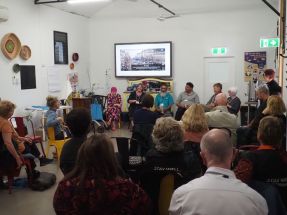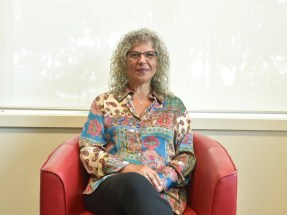Omitting workforce in funding boost ‘short-sighted’
The Federal Government has announced $632.6 million in the mid-year budget but provider groups are unhappy about the lack of commitment for workers including better wages.

The Federal Government has announced an extra $630 million over four years for aged care in its mid-year economic outlook including $9 million to extend commitment bonus registered nurses.
Provider groups say the lack of funding for workforce including better wages is short-sighted and disappointing, while consumer peak COTA Australia says more funding is required for the measures already announced.
The $632.6 million allocated to aged care in the Mid-Year Economic and Fiscal Outlook (MYEFO) builds on the government’s five pillar five-year reform plan and brings the total commitment to date to $18.3 billion.
It includes $9.1 million to extend the Aged Care Registered Nurses’ Payment, and additional$64.2 million for the business improvement and thestructural adjustment funds to and $27 million to underpin new aged care provider governance requirements that aim to lift provider leadership capability.
There is also $154 million to improve technology adoption that reduces paperwork and enables staff more time to care for residents and $8.8 million to appoint an interim Inspector-General of Aged Care and establish a supporting taskforce within the Department of Health.
Workforce commitment lacking
Australian Aged Care Collaboration, an alliance of six aged care peak bodies, said the government failed to commit to support a pay rise for aged care workers in this year’s MYEFO.

Aged and Community Services Australia CEO and AACC representative Paul Sadler called the lack of commitment to workforce “short-sighted”.
“The biggest risk we have with the government’s failure to really address the workforce challenges is that we see older people miss out on services they need, and we see staff continuing to struggle filling in gaps,” Mr Sadler told Australian Ageing Agenda.
“It’s really short-sighted of the government, in our view,” he said.
Mr Sadler said the sustainability of the system is another “absolutely urgent” area.
“There was no commitment to support improved indexation subsidies being paid to aged care providers, and that’s really critical because it was a recommendation of the royal commission that there should be an immediate change to indexation arrangements, and the government has failed to implement that recommendation,” he said.
“The implication of that is that aged care services, both home care and residential care, will continue to struggle to break even,” Mr Sadler said.

Fellow AACC representative and Leading Age Services Australia CEO Sean Rooney called the lack of funding support for the workforce “disappointing”.
“An ongoing workforce crisis means beds being left vacant in residential aged care while providers of home care packages will be forced to take on fewer clients as they won’t have the staff to provide the services,” Mr Rooney told AAA.
“Fixing workforce is key to improving the aged care system so that providers are able to give the care and support that older Australians need and want,” he said.
Mr Rooney said funding, governance and the operation of the National Aged Care Advisory Council are other critical areas that need to be addressed.
‘More will be required’

Council on the Ageing Australia CEO Ian Yates welcomed the funding, but said most of the reform measures announced will require more funding.
“In most of these the MYEFO funding is an initial investment and more will be required, especially in additional disability funding and the ICT builds,” Mr Yates said in a statement.
“We expect to see those further commitments announced in the March 2022 Budget,” he said.
Other funding
- $6.3 million for the Aged Care Quality and Safety Commission to deliver strong aged care prudential oversight
- $5.7 million to support the transition of clinical care components of the Aged Care Quality Standards to the Australian Commission on Safety and Quality in Health Care
- $34.8 million to extend funding to expedite the transition of younger residents to more appropriate accommodation
- $44.1 million to implement a Serious Incident Response Scheme for home care
- $229.3 million for the Disability Support for Older Australians program
- $34.4 million to expand the Community Visitors Scheme
Comment on the story below. Follow Australian Ageing Agenda on Facebook, Twitter and LinkedIn, sign up to our twice-weekly newsletter and subscribe to AAA magazine for the complete aged care picture.




Still zero funding for residential facilities for direct care needs! Zero funding for improved wages and additional staffing if required. And zero funding for the supposed “sustainability” crisis. Well done libs.